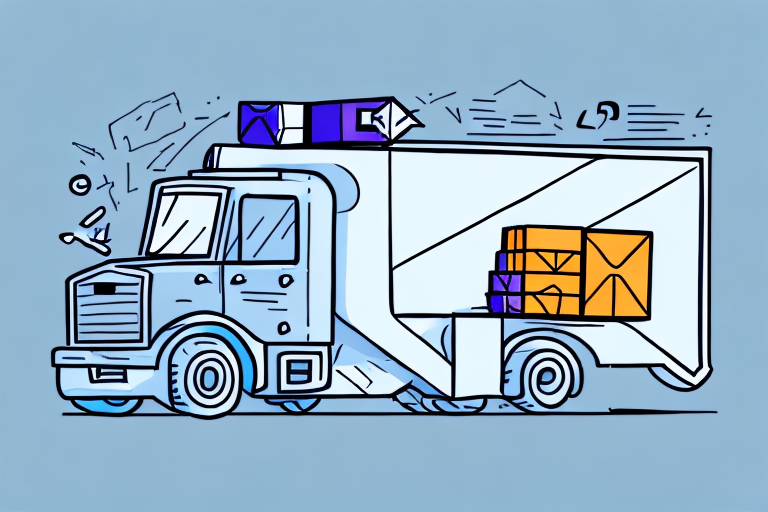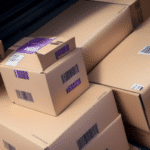Why Non-Standard Packaging Requires Special Shipping
Shipping packages that fall outside standard dimensions or weight categories presents unique challenges. Non-standard packages often have irregular shapes, sizes, or weights, making them difficult to handle and transport using conventional shipping methods. This can necessitate additional precautions to ensure safe and timely delivery.
- Handling and Transportation: Irregularly shaped or oversized packages may not fit into standard shipping containers or vehicles, requiring specialized equipment or vehicles for transport.
- Additional Labeling and Marking: Non-standard packages may need extra labeling to indicate special handling requirements, such as "Fragile" or "Hazardous Materials."
- Compliance with Regulations: Packages containing hazardous materials must adhere to specific shipping regulations, including proper documentation and labeling.
Understanding these factors is crucial for selecting the appropriate FedEx service and preparing your package correctly.
FedEx's Packaging and Shipping Requirements
To successfully ship non-standard packages with FedEx, it's essential to familiarize yourself with their specific packaging and shipping guidelines. These requirements help ensure that your package is handled correctly and arrives safely.
Packaging Guidelines
FedEx provides detailed instructions on suitable packaging materials and methods. Using the right packaging helps protect your items from damage during transit.
Weight and Size Limitations
Each FedEx service has its own weight and size restrictions. Exceeding these limits can result in additional fees or the need to select a different shipping option.
Labeling and Marking
Proper labeling is critical, especially for non-standard packages. Ensure all necessary labels, such as "Fragile" or "This Side Up," are clearly visible.
For comprehensive details, refer to FedEx's Shipping Requirements.
Choosing the Right FedEx Service for Non-Standard Packages
FedEx offers a variety of shipping services tailored to different needs. Selecting the right service depends on factors such as package size, weight, destination, and delivery speed.
FedEx Ground
Ideal for larger, heavier packages, FedEx Ground offers reliable delivery within the U.S. at a cost-effective rate.
FedEx Express
For time-sensitive shipments, FedEx Express provides expedited delivery options both domestically and internationally.
FedEx Freight
Suitable for very large or heavy shipments, FedEx Freight handles oversized cargo that standard services cannot accommodate.
International Shipping Considerations
When shipping internationally, ensure that you choose a service offering customs clearance and adhere to international shipping regulations.
Explore all FedEx services at FedEx Shipping Services.
Preparing Your Non-Standard Package for Safe Delivery
Proper preparation is essential to ensure that your non-standard package arrives safely and on time. This involves selecting the right packaging materials, securing the contents, and adhering to FedEx's guidelines.
Selecting the Right Packaging
Use sturdy materials that can withstand the rigors of shipping. For oddly-shaped items, custom-built boxes or crates may be necessary.
Securing Package Contents
Ensure that all items are tightly packed and cushioned to prevent movement and damage during transit. Consider using foam inserts, bubble wrap, or packing peanuts.
Special Handling for Fragile or Hazardous Items
Items that are fragile or hazardous require additional care. Use appropriate cushioning and clearly label the package to indicate its contents.
For guidelines on packaging, visit FedEx Packaging Guidelines.
Labeling and Marking Your Non-Standard Package
Proper labeling and marking are crucial for the safe handling and timely delivery of your package. Accurate labels provide essential information to FedEx personnel about how to handle your shipment.
- Address Labels: Clearly write or print the delivery and return addresses. Include contact numbers if possible.
- Special Handling Labels: Use labels such as "Fragile," "This Side Up," or "Perishable" to indicate any special instructions.
- Hazardous Materials Labels: If shipping hazardous materials, ensure all required labels and documentation are included.
Ensure that all labels are legible and securely attached to the package to prevent them from falling off during transit.
Refer to FedEx Special Shipping Types for more information on labeling requirements.
Getting a Shipping Quote from FedEx for Non-Standard Packages
Obtaining an accurate shipping quote helps you budget effectively and choose the most cost-efficient shipping option for your non-standard package.
Factors Affecting Shipping Costs
- Package Dimensions and Weight: Larger and heavier packages typically incur higher shipping fees.
- Destination: Shipping to remote or international locations can affect the cost.
- Service Type: Expedited services like FedEx Express are more expensive than standard options like FedEx Ground.
Requesting a Quote
You can obtain a shipping quote by using FedEx's online Shipping Calculator or by contacting FedEx customer service.
Consider additional services such as insurance or special handling, which may add to the overall cost but provide extra protection for valuable or fragile items.
Tracking Your Non-Standard Package with FedEx
Monitoring your package's journey ensures you stay informed about its status and can address any potential issues promptly.
Tracking Options
- Online Tracking: Enter your tracking number on the FedEx website to view real-time updates.
- Email and SMS Alerts: Sign up for notifications to receive automatic updates via email or text message.
- FedEx Mobile App: Use the mobile app to track shipments and receive alerts on the go.
Real-Time Updates
FedEx provides real-time tracking information, allowing you to see the exact location of your package at any moment. This feature is particularly useful for high-value or time-sensitive shipments.
Access tracking services at FedEx Tracking.
Common Mistakes to Avoid When Shipping Non-Standard Packages with FedEx
Avoiding common errors can significantly enhance the shipping experience and ensure your package arrives safely and on time.
Improper Labeling and Marking
Failing to clearly label your package or using incorrect labels can result in mishandling or delays. Always double-check that all necessary labels are applied correctly.
Choosing Inappropriate Packaging
Using inadequate or unsuitable packaging materials can lead to damage during transit. Invest in high-quality packaging designed for your specific type of shipment.
Neglecting to Secure Package Contents
Items that are not securely packed can shift or break, causing damage. Ensure all contents are firmly in place and cushioned against impact.
Ignoring Weight and Size Limits
Overweight or oversized packages may incur additional fees or require different shipping methods. Accurately measure and weigh your package before shipping.
Overlooking Shipping Regulations for Hazardous Materials
Shipping hazardous materials without adhering to regulations can have legal and safety implications. Always comply with FedEx's guidelines for hazardous shipments.
By being aware of and avoiding these common mistakes, you can improve the reliability and efficiency of your shipping process.
For more tips on successful shipping, visit FedEx Shipping Tips.






















